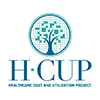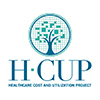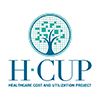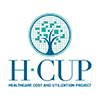National Healthcare Quality and Disparities Report
Latest available findings on quality of and access to health care
Data & Analytics
- Data Infographics
- Data Visualizations
- Data Tools
- Data Innovations
- All-Payer Claims Database
- Consumer Assessment of Healthcare Providers and Systems (CAHPS®) Program
- Healthcare Cost and Utilization Project (HCUP)
- Medical Expenditure Panel Survey (MEPS)
- National Healthcare Quality and Disparities Report Data Tools
- Network of Patient Safety Databases
- AHRQ Quality Indicator Tools for Data Analytics
- Surveys on Patient Safety Culture
- United States Health Information Knowledgebase (USHIK)
- Data Sources Available from AHRQ
Data Resources
Filter by Topic
- Access to Care (4)
- Adverse Events (1)
- Ambulatory (2)
- By Payer (2)
- By State (3)
- Children (3)
- Children (1)
- Children/Adolescents (1)
- Clinicians (1)
- Community Pharmacies (1)
- Costs (2)
- Costs & Charges (1)
- Coverage (4)
- Data (3)
- Discharges by State (1)
- Disparities (2)
- Elderly (1)
- Element Definitions, Values & Information Models (1)
- (-) Emergency Departments (4)
- Employer (1)
- Estimates (State & Metro) (1)
- (-) Expenditures & Projections (3)
- Health (5)
- Health Care (8)
- Health Conditions (5)
- Health Plans (3)
- Health Systems (1)
- Hospital Characteristics (2)
- Hospitalizations (10)
- Household Spending (1)
- Injuries Seen (1)
- Inpatient Care (1)
- Insurance (9)
- Medicaid (1)
- Medicare (1)
- Men (1)
- Mental Health (3)
- Mental Health and Substance Abuse Disorders (2)
- Obesity (1)
- Opioids (1)
- Patient Experience (1)
- Payment Sources (1)
- Premiums (1)
- Prescription Drugs (1)
- Preventable (1)
- Private (1)
- Quality (3)
- Readmissions (2)
- Safety Culture (1)
- SCHIP (1)
- Spending (2)
- State (1)
- Surgery (3)
- Systematic Review (1)
- Systems - Characteristics (1)
- Uninsured (2)
- Use (3)
- Visits (2)
- Women (2)
Data Resources
The Agency for Healthcare Research and Quality (AHRQ) offers practical, research-based tools and other resources to help a variety of health care organizations, providers and others make care safer in all health care settings.
Results
1-7 of 7 Resources displayed
These HCUP Statistical Briefs provide statistics about emergency department visits in community hospitals in the United States. Topics include reasons for emergency room visits among adults and children and transfers to other health care facilities from the emergency department.

These HCUP Statistical Briefs provide statistics about injuries that result in emergency department visits. Topics include sports-related injuries, motor vehicle accidents, firearm-related injuries, and bicycle-related injuries that result in visits to the emergency room.

Projected household expenditure data from the 2002 MEPS Household Component file aligned with the 2002 National Health Expenditure Accounts (NHEA). Projected expenditures are calculated in a two-step process. First, core data from the 2002 NHEA-aligned MEPS file are projected to each end year through 2016 by adjusting MEPS person weights with Census projections for population totals, fertility and mortality over time. Then, the re-weighted NHEA-aligned MEPS expenditures are calibrated annually by type of service and source of payment categories so that growth in the re-weighted NHEA-aligned MEPS expenditures matches growth in the projected NHEA. Users should be aware that these estimates are surrounded by uncertainty from a wide variety of sources.

Health care costs (both charges and payments) are collected for all persons for each medical event they experience in the year, including the amount from each payment source. Charges are the dollar amounts asked ("charge") for a service by a health care provider. This is often different from the actual payments made to providers. Expenditure estimates are based on payments, not charges. More specifically, expenditures in MEPS are comprised of direct payments for care provided during the year, including out-of-pocket payments and payments by private insurance, Medicaid, Medicare, and other sources. In addition to the tables, query tool, and publications below, person-level and event-level data files with health care expenditure variables can be downloaded for analysis.

MEPSnet is a collection of analytical tools that operate on MEPS data in two categories: MEPSnet/Household Component provides easy access to nationally representative statistics of health care use, expenditures, sources of payment, and insurance coverage for the U.S. civilian noninstitutionalized population. MEPSnet/HC allows you to generate statistics using MEPS Household Component public use files. MEPSnet/Insurance Component provides easy access to national and state level statistics and trends about health insurance offered by private establishments and state and local governments. MEPSnet/IC guides you step-by-step in locating statistics of interest across all available years using data from the MEPS Insurance Component Summary Data Tables.

The Nationwide Emergency Department Sample (NEDS) produces national estimates about emergency department (ED) visits across the country. The NEDS describes ED visits, regardless of whether they result in admission. One of the most distinctive features of the NEDS is its large sample size, which allows for analysis across hospital types and the study of relatively uncommon disorders and procedures.

The State Emergency Department Databases (SEDD) are a set of longitudinal State-specific emergency department (ED) databases included in the HCUP family. The SEDD capture discharge information on all emergency department visits that do not result in an admission. Information on patients seen in the emergency room and then admitted to the hospital is included in the State Inpatient Databases (SID).



